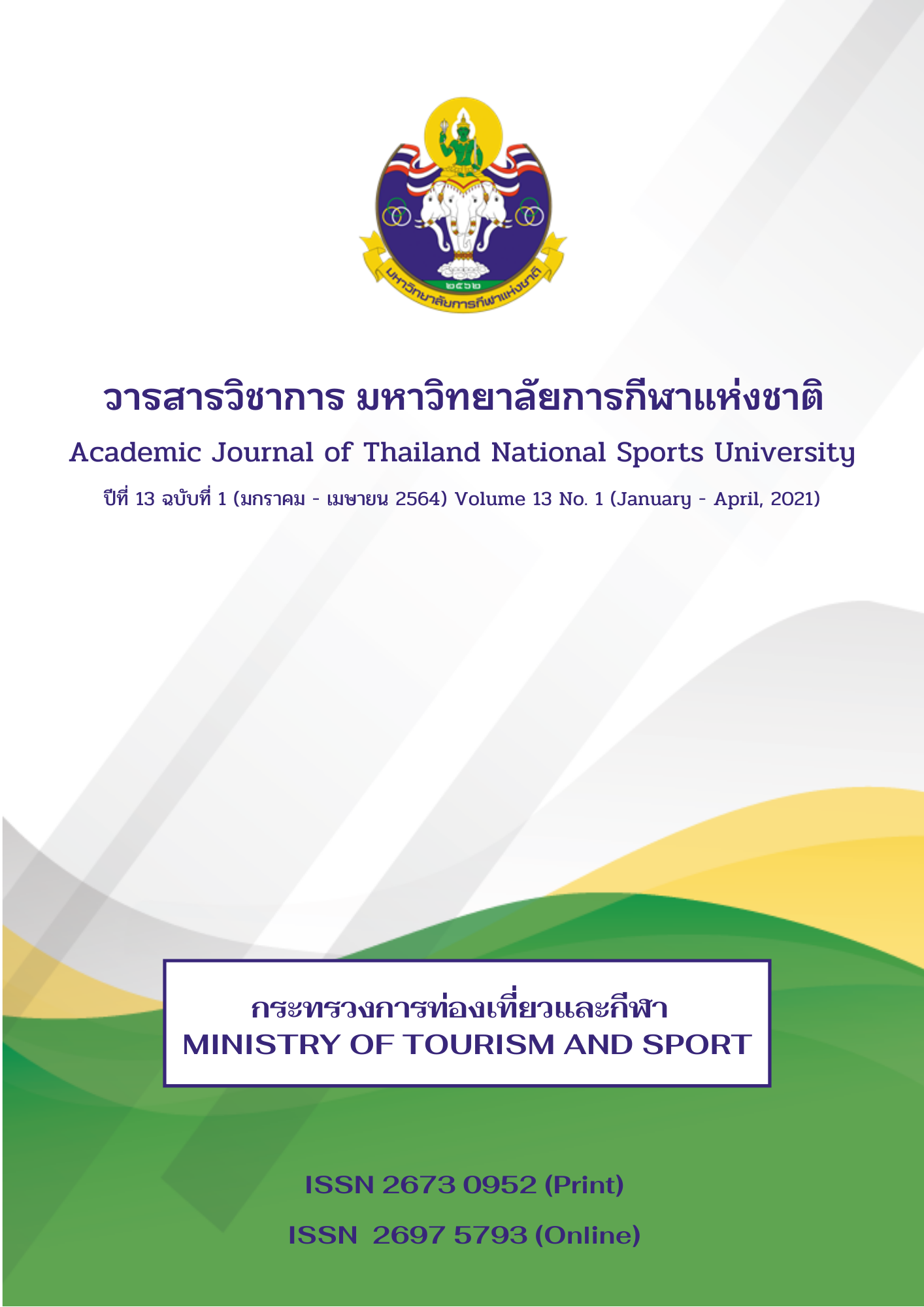EFFECTS OF ADDITIONAL SINGLE-LEG CO-CONTRACTION TRAINING ON STABILITY INDEX IN MALE BADMINTON PLAYERS
Main Article Content
Abstract
This experimental study aimed to study the effects of additional co-contraction training during standing on one leg, applied from star excursion pattern, in male badminton players aged between 18-25 years. Twenty four subjects were divided into two groups, control and experimental groups. The Overall Stability Index (OSI), result of Balance in every direction, Anterior/Posterior Index (API) and Medial/Lateral Index (MLI) were measured by using Biodex Balance System (Bio Sway). Pre and post training, three times a week for 6 weeks, were measured all parameters. Mean and standard deviation were compared between pre and post training with Dependent t-test (repeated measure), and between groups with Independent t-test. The statistical significance was set at p<0.05. Results were found that balance performance was better and this method can improve balance performance in athletes: The experimental group showed significantly decrease of stability index, additionally, decreased significantly more than that in control group in all of stability index.
Conclusion: The additional co-contraction training, applied from star excursion pattern, in male badminton players, three times a week for 6 weeks, could enhance balance performance at all directions.
Article Details
The published article is a copyright of the Academic Journal of Thailand National Sports University. The passage appeared in each article in this academic journal is a perspective of each author which is not related to the journal. Each author is required to be responsible for all components of his/her own article. If there are any mistakes, each author must be responsible for those mistakes on his/her own.
References
Bello M., Laura B.M.M., Eliane F.G., Romeu R.S. (2011). Rhythmic stabilization versus conventional passive stretching to prevent injuries in indoor soccer athletes: A controlled clinical trial. Journal of Bodywork & Movement Therapies, 15, 380-383.
DiStefano, C., & Kamphaus, R. W. (2006). Investigating subtypes of child: A comparison of cluster analysis and latent class cluster analysis in typology creation. Educational and Psychological Measurement, 66(5), 778-794.
Glomer, E., Dupui, P., Sereni, P., & Monod, H. (1999). The contribution of vision in dynamic spontaneous sways of male classic dancers according to student or professional level. Journal of Physiology, 53(1), 65-70.
Hall C.M., Brody L.T. (2011). Therapeutic exercises: Moving toward function (3rd ed.). Philadelphia: Lippincott Williams & Wilkins.
Hu, X., Li, J. X., Hong, Y., & Wang, L. (2015). Characteristics of plantar loads in maximum forward lunge tasks in badminton. PloS one, 10(9).
Kang, A. L., & Ramalingam, V. (2018). Risk factors for lower extremity injuries in young badminton players. Scientia Medica, 28(2).
Kovacs, E., Birmingham, T., Forwell, L., & Litchfield, R. (2005). Effect of training on posture control in figure skates. A randomized controlled trial of neuromuscular versus basic off – ice training program. Clinical Journal of Sports Medicine, 14(4), 215-224.
Muttalib, A., Zaidi, M., & Khoo, C. (2009). A survey on common injuries in recreational badminton players. Malaysian Orthopaedic Journal, 3(2), 8-11.
Neumann, D.A. (2010). Kinesiology of the musculoskeletal system: Foundation for physical rehabitation (2nd ed.). Retrieved from https://evolve.elsevier.com
Phomsoupha, M., & Laffaye, G. (2015). The science of badminton: Game characteristics, anthropometry, physiology, visual fitness and biomechanics. Sports Medicine, 45(4), 473-495.
Plisky, P. J., Gorman, P. P., Butler, R. J., Kiesel, K. B., Underwood, F. B., & Elkins, B. (2009). The reliability of an instrumented device for measuring components of the star excursion balance test. North American Journal of Sports Physiology Therapy, 4(2), 92-99.
Surburg Paul R., John W. Schrader (1997). Proprioceptive neuromuscular facilitation technique in sports medicine: A reassessment. Journal of Athletic Training, 32(1), 34-39.
Yung, P. S., Rit, C., Wong, F. C., Cheuk, P. W., & Fong, D. T. (2007). Epidemiology of injuries in Hong Kong elite badminton athletes. Research in Sports Medicine, 15(2), 33-46.


